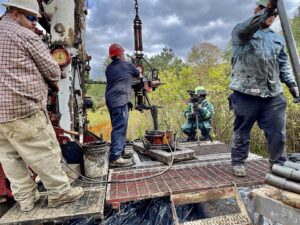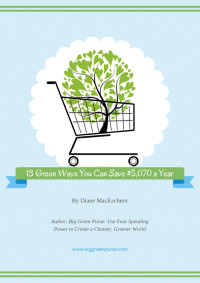A climate change heat wave – marked by wildfires, drought, and temperatures you’d more likely expect to find in Hell – is burning up close to half of the United States and breaking records in the Pacific Northwest, an area of the country that you can usually count on to stay cool.
But that’s not the most terrifying news.
“As bad as it might seem today,” University of Michigan climate scientist Jonathan Overpeck (1) worries, “this is about as good as it’s going to get if we don’t get global warming under control.”
You mean it could get worse?
YEP.
What’s Causing This Climate Change Heat Wave?
An area of high atmosphere pressure known as a heat dome (2) is propelling temperatures as much as 30 degrees above normal, and not just in places like Death Valley or the Mojave Desert.

Doctors in Arizona and Nevada have warned residents that touching pavement could cause third-degree burns. Temperatures are reaching the point where bottoms of flip-flops could melt onto sidewalks.
Portland, Seattle, and towns in Canada are crushing all-time heat records, hitting temperatures of 116 and even 119 that sound more like what you’d find in Hell than in the north country.
Temperatures hit 118 – in Siberia. Siberia!
People who normally run around with sweaters during the day are scouring stores for fans and air conditioner units. Cities are opening cooling centers. Utility companies are asking people to use as little electricity as possible so they don’t overburden the power grid.
Don’t Miss This Important Post: Why Climate Change Matters to Women
As for your favorite foods? If they’re grown in California’s Central Valley, where fruits and vegetables feed a good 25% of Americans, they’re at risk. “Heat means the end of cherry season,” said orchardist Michael Harris (4). Another grower, Kou Her is simply trying to protect tomatoes. “I am terrified,” he said. “I’ve never experienced three days of 110 before.”
Even if the crops can be kept alive, what about the farmworkers who harvest them? Eighteen-year-old Luz Cruz battles potential heat stroke every time she heads out into the fields to pick grapes in 115-degree temperatures. “I’d never experienced anything like that,” she told The Washington Post. “My head hurt and I was gasping,” she said.

High temperatures create drought, and drought creates “kindling”—a lot of kindling. Right now, thanks in part to the climate change heat wave, wildfires threaten Montana, Utah, Wyoming, Colorado, and Idaho because it’s so darn dry there. Last spring, Idaho experienced its second-driest spring in the last 126 years, a situation that now has firefighters in the state on high alert. The Cold Creek fire near Pocatello has already burned through 2,500 acres and burned down two homes.
“One of the biggest ways climate change is affecting humans is by loading the weather dice against us. Extreme weather events occur naturally; but on a warmer planet many of these events are getting bigger, stronger, and more damaging,” Katharine Hayhoe, a climate scientist at Texas Tech University and the Nature Conservancy, also told the Post. “They’re affecting our health, the safety of our homes, the economy, and more.”
The National Weather Service agrees. “This level of heat, and especially the duration of the heat, is dangerous to all population groups and steps should be taken to mitigate risk to heat exposure.”
Jeff Berardelli, meteorologist and climate specialist for CBS news, told radio program 1A on WAMU.org that the jet stream has slowed down, creating an “Omega block” of hot air that doesn’t let anything move.
“We’ve never seen anything like it.”
It’s “Otherworldly,” he said. “We’ve changed this world dramatically. Humans have become a force of nature.”
“This heat dome is about a 1 in 10,000 event. You might only experience it once every few thousand years, if that. Now, because of human-caused climate change, it’s going to become more routine.”
And among other things, that means people are going to die. “Heat is the most deadly weather event in the United States, even more so than hurricanes and floods,” Bernardelli warned. “Heat kills more people…the most fragile can’t survive it.”
The meteorologist says that, though solar and wind are displacing the fossil fuels whose emissions are a major source of climate change, “it’s not really happening fast enough to help us meet our Paris climate goals.”
There are a lot of “entrenched special interests out there who are making a lot of money off of doing things the ways they’ve been doing them for 50, 100 years. So that needs to slowly go away. There needs to be more (political, lobbying) power, no pun intended, in industries like solar and wind.
“We’re beginning to see catastrophic climate impacts unfold in different parts of the world…Strong hurricanes are becoming more likely because of human-caused climate change.”
That means that, “Unfortunately these events that we’ve never seen in recorded history…are likely to continue.”
That said, we can’t stop trying to stop climate change.
Here’s what you personally can do:
10 Ways to Reduce the Climate Impact of Your House
Switching to LEDs and Other Energy Saving Devices Will
Help You Use Less Energy –
Here’s what’s available in our Shop.
LINKS:
(3) Doctors Raise Health Concerns
(5) Farmworkers Struggle in Heat
(6) Climate Scientist Katherine Hayhoe
(7) Meteorologist Jeff Berardelli
A version of this story originally ran at MomsCleanAirForce.org.



















